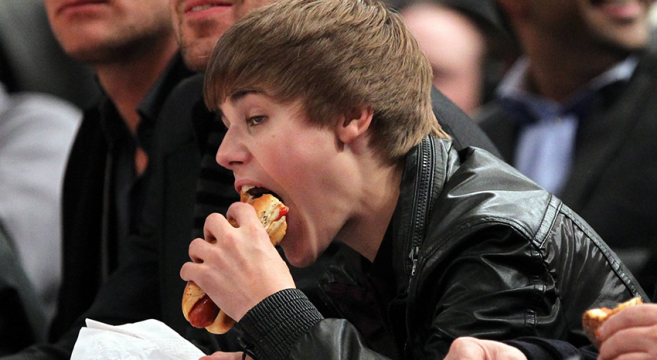Celebrities Meet for Lunch, Forgo Tip for Charity
LOS ANGELES, CA – Imagine you’re out for lunch, taking in the day like the rest of them before. Maybe you’re reading the paper, scrolling through your phone, or maybe you’re just whistling a tune to yourself when, all of the sudden, the world’s most famous A-Listers walk through the door for a bite to eat. That’s exactly what happened to Fedrique Horatzes, a local patron working as a coach at the nearby daycare. “All these people was coming through the front door,” said Horatzes, “and one by one I started noticing that they’s all’s had’s familiar’s faces’s. I swore I’d seen all of them at some time in my life. I turned to my step-nieces, and before I could say anything, these bastards once removed start talking about famous people, one after another: actresses, singstresses, Bluetube [sic] stars. Turns out these folks were celebrities!”
Around the time the well-known figures took their seats, egg chef Denise Sohns was grabbing a lime wedge from the bar. “They tell me you shouldn’t work with eggs when you got a sore throat, that it’ll make you think too much about the buildup of mucus in your throat.” Sohns then divulged that she was more than a little curious with the gathering. “Those celebrities were ordering food. I knew then it was the time for me to get back to the grind, so I threw the rind in my pocket and made my way back to the kitchen.”
These are only two variant examples, one could argue, mere slants in perspective of a sight now common, almost trite in Hollywoodland. For many years, celebrities were known to only eat bite-sized snacks on the hour, an unwavering tradition that thrived until 1982 with the death of famed acting coach and method snacker Lee Strasburg. Coincidentally, that very same year, the State of California approved the Restaurant Gratuity Act, which gave birth to nation’s first tip-oriented payment scheme for restaurant employees.
“We cannot feed our perception of this particular lunch as one point of either celebrity or tipping discourse,” says Kujimo Samsa, a Ph.D candidate at the Louis Armstrong Institute of Good Eatin’, affiliated with Tulane University. “Rather, we have proof that seemingly unrelated aspects of society derive their start from the same impetus, and thus exist in a kinetic synthesis where one cultural idiom informs the other, and vice versa.”
But academic theory is moot in the face of the cold hard facts that head server Euston Tibertino faced after the bill was put down on the table. “I won’t disclose how much the check was, but what I do feel comfortable saying is that I could have afforded to put out an ad in the paper where the horoscopes should be. Call me crazy, but with that money I could afford to be a Taurus in any country!” No, there was no tip, but the note on the dotted line spoke louder than any action. “Aries’ son to keep living? No, no, I mean, it’s funny, but…I don’t know. When you’ve been to as many open-mics as I have, you get a sense for these kinds of things.” To break the culture of tipping can be seen as representative of celebrity aloofness, pigheadedness in the shadow of being out of touch with the rest of society. But when it’s all for the sake of a good cause, can you blame the these famous trendsetters?
Trendsetters they always have been, and trendsetters they remain on this occasion. Thousands of restaurants across the United States have reported random acts of donation substituted for gratuity. Samsa had this to say: “Elites are the perennial developers and conductors of culture, even in today’s collective oeuvre of viral media. At his own wake rehearsal, Lee Strasberg warned to Al Pacino: ‘Blessed be the children, we, who munch on bits ‘till sundown. But if the we makes two, then three, then dawn will be our nightgown.’”
